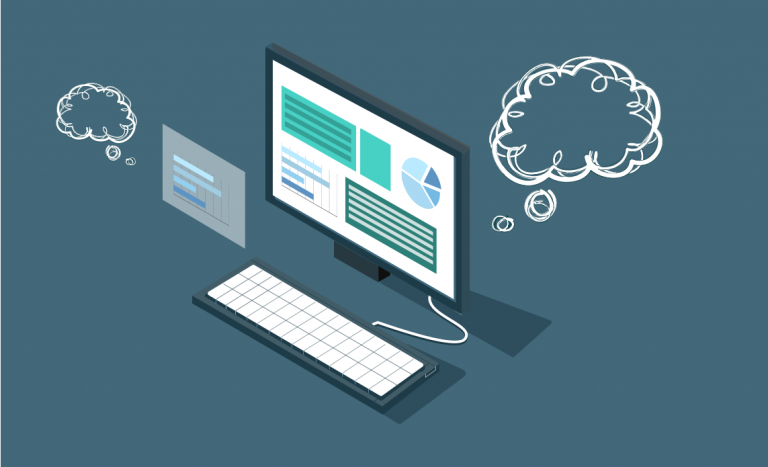So, what’s the low-down on insight and analytics? Analytics allow you to gain valuable insight into customer behaviour and market trends, giving you the ability to cater to your current customers’ emotions and desires as well as increasing your exposure to potential new clientele. As Adlai Stevenson II once stated, “understanding human needs is half the job of meeting them”, and when it comes to the importance of analytics and insight, this pretty much sums it up.

Insight Vs. Analytics
In today’s business world the words insight and analytics are thrown around like confetti. However, with often misunderstood nuances in meaning, insight and analytics present two different ideas and when used effectively, can hold the key to truly understanding consumer behaviour and increasing exposure and revenue.
All about the Data
Analytics is all about that data. It’s characterised by the analysis of numbers and statistics. So what sort of data feeds into analytics? The truth is, data is a diverse field, with different types used to acquire varied insights. For example, quantitative and social data. Quantitative data deals with statistics and hard facts, gauging opinions through surveys and using a company’s profits to gain insight, whereas social data is more holistic as it’s obtained from social networking events and can be used to analyse social interaction in social contexts.
More importantly there’s ‘big data’ which is kind of a big deal. The term refers to the analysis of leading data science, such as the use of consumer patterns to predict customer behaviour. According to The Economist’s 2010 article ‘Data, data everywhere’, the analytics drawn from big data affords the capacity to “spot business trends, prevent diseases, combat crime and so on”, making these analytics invaluable to business.
More than meets the eye
Quander founder Gavin Williams states that analytics is about “re-evaluation” and explains that when studying analytics at Quander, they ask: “What exactly does that data mean for you, as an event organiser or brand?”
The dictionary definition of insight refers to “the capacity to gain an accurate and deep understanding of someone or something” and, when it comes to businesses, customer insight does exactly what it says on the tin. It is the insight gleaned from your analytics that gives you the best understanding possible of your customers and what they really want. If you want to know what makes your customers tick, you need to study those analytics as though you’ll be taking an exam on them.
To highlight this, Gavin recalls a recent occasion which saw an event organising company “completely change what they do for their next event” after Quander’s clever use of data analytics gave insight on what worked and what didn’t. In other words, insight can help you turn The Good, the Bad, and the Ugly into The Good, the Better, and the Best.
The power couple of the Business World
It’s clear to see that both analytics and insight play vital roles in every big company’s success story and, as insight is drawn from analytics, the two are intrinsically linked. If you want your insight to be your secret weapon, you’ve got to make those analytics as sharp as a knife because. As Gavin perfectly explains, “it’s pointless collecting data for the sake of collecting data”. This is a trap many companies fall into, leaving them with piles of data which they are unsure how to use – where’s the benefit in that?
So, when it comes to analytics, just think about it like this – it’s not what you know, it’s what you do with what you know. Once you’ve had the epiphany of how to use these analytics to gain valuable customer insight, you will be able to effectively target your audience and increase your company’s exposure.
Know when your customers are happy
When speaking of insight, it would be remiss not to mention sentiment analysis. Sometimes known as “opinion mining”, it refers to the analysis of consumers’ attitudes and emotions towards certain topics or events. This type of analytics is a powerful tool when it comes to giving insight into how well a company is at empathising with its audience. Subsequently this insight allows you to improve your company’s emotional intelligence by allowing you to engage with your customers on an emotional level. After discovering what evokes emotions of excitement and passion in your customers, you can tailor your company’s marketing strategy to ensure that it captures your audience’s imagination, and their hearts.
Quander's collection of clever data
Quander expertly displayed how event technology can facilitate data collection at the Cheltenham Literature Festival, for which they developed an interactive experience to celebrate Nespresso’s launch of its Vertuo coffee maker in the UK in partnership with lead agency Wasserman. This experience allowed guests to have their “redefining dreams” made a reality thanks to a ‘live art experience’ which could be captured and subsequently shared on social media.
Customers were asked about their dreams and aspirations and then had their photos taken. An artist subsequently illustrated over these photos in real time, creating eye-catching images that brought the customers’ aspirations to life. Take the photo on the left, for example, whereby childhood dreams of becoming superman were finally realised.
This experience incited over 200 customer interactions, displaying how creating exciting events encourages people to provide data willingly and thus eradicates the boring and laborious work that traditional data collection entails.